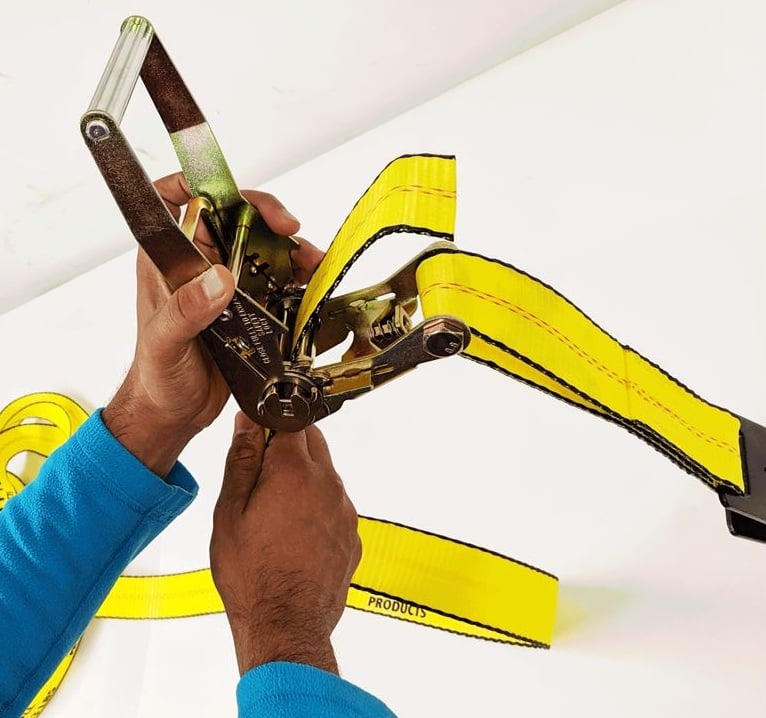Every truck driver knows that you need the right tools for the job. There are different tarps for different types of loads, and different methods of fastening a tarp to the trailer bed. One of the more convenient types of straps is the rubber strap with the S-hook in either end. These straps come in both natural and synthetic, ethylene propylene diene monomer (EPDM) rubbers. The question is – is one better than the other?
Neither natural nor synthetic rubber is a better product overall. Both have their pros and cons depending on how they are used. It is best to have both kinds on hand if you are a driver that works in all regions of the country and during all seasons. Both work equally well with steel and lumber tarps of all sizes.
Natural Rubber Straps
Rubber tarp straps are incredibly convenient when all you are doing is securing the tarp itself. They go on in just seconds, and are durable enough to handle road speeds and the elements.

When you choose natural rubber, you are choosing a material that works very well in most environments, with the exception of the blazing hot sun of the American South and Southwest. High temperatures cause natural rubber to lose its elasticity, while UV rays break down the material’s composition.
On the other hand, natural rubber is the material of choice for winter use. Unlike EPDM, natural rubber does not become brittle in subfreezing temperatures. It also tends not to crack or tear in cold weather.
EPDM Rubber Straps
EPDM is an M-class synthetic rubber with a high ethylene content of between 45% and 85%. The higher the ethylene content, the more polymers can be used in the rubber mixture without affecting extrusion. This allows for a higher polymer cross-link density for stronger material.
EPDM is the best choice for securing tarps in hot weather under the scorching sun. This synthetic product holds up very well under high temperatures without losing strength or elasticity. EPDM offers a second benefit for sunny environments: it is not prone to breaking down from exposure to UV rays. Unfortunately, the same cannot be said about EPDM in cold weather environments. Cold weather tends to make EPDM brittle and prone to tearing.
Keep in mind that branding does matter when purchasing your truck tarps and straps. Where rubber straps are concerned, the fact that they all look pretty much the same can be deceiving. You are better off paying a little more for a branded product in order to get a better quality strap with a longer life and more durability.
Pairing With Rubber Ropes
You will find that it is difficult to purchase rubber straps greater than 41 inches in length. So what does the trucker do when he or she needs coverage across a much larger area? Hooking multiple tarp straps together is not necessarily a wise idea because doing so creates more opportunities for failure. Instead, pairing straps with rubber rope is the best idea.
Rubber rope can be cut to the desired length for continuous coverage across your entire load. Then insert S-hooks at either end to be attached to shorter straps where necessary. The combination of rubber rope and tarp straps provides a perfect solution for securing any load.
When buying tarp straps, it is important to have the right tool for the job. Consider weather conditions, cargo type, and any other factors necessary to choosing the right straps.










